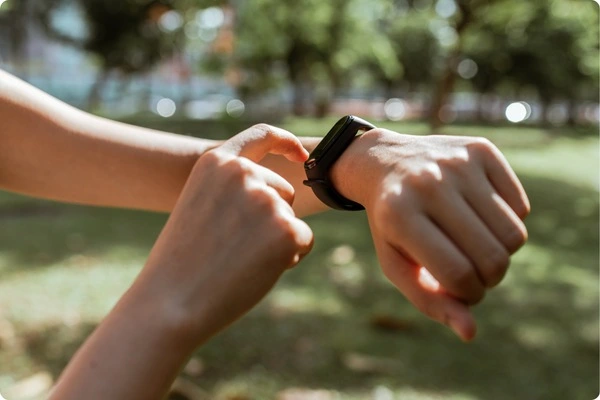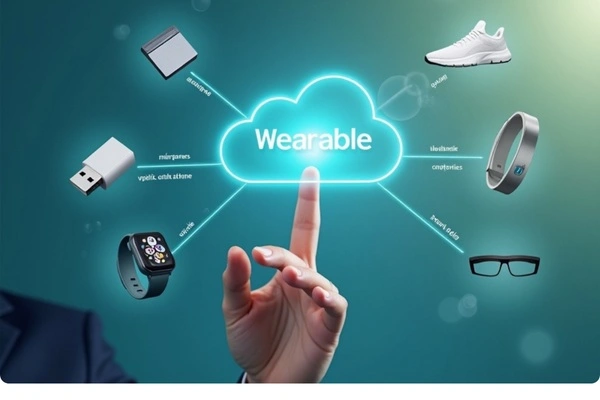Wearable technology, commonly known as wearables, has significantly changed how we interact with technology in our daily lives. From health-tracking devices and smart clothing to augmented reality glasses, wearable technology provides users with powerful tools for monitoring their health, optimizing performance, and enhancing their daily experiences. With an ever-expanding market and rapid technological advancements, understanding wearable technology is essential as it increasingly integrates with our lifestyles and becomes a part of our health and wellness management strategies. This article will comprehensively explore the various dimensions of wearable technology, including its types, benefits, challenges, and future potential.
What is Wearable Technology?
Wearable technology refers to electronic devices that can be comfortably worn on the body, typically involving advanced sensors, software, and often connectivity features (like Bluetooth or Wi-Fi). These devices usually collect, analyze, and display data to the user in real time, enhancing their user experience across a range of applications, from health monitoring to notifications and more.
Historical Context
The concept of wearable technology has its roots in the early experiments of wearable devices. The first known instance was in the 1960s with the invention of the “wearable computer”, a device designed for military use. However, wearable tech truly began to enter the consumer market in the late 20th century. Advancements in materials science, computing, and battery technology have greatly influenced how these devices are designed and function today.
Over the years, companies like Fitbit, Apple, and Samsung have popularized wearables, bringing smart technology into everyday life. Today, wearables are not just user-centric devices; they are evolving into tools used by professionals in healthcare, athletics, and beyond.
The Evolution of Wearable Technology
From Concept to Trend
The evolution of wearable technology can be divided into multiple phases, each characterized by groundbreaking innovations and changes in consumer behaviour.
- The Early Years (1960s-1990s)
In the early days, wearable technology primarily focused on military applications and experimental devices (like the first wearable computer), which laid the foundation for the technology we know today.
- The Fitness Revolution (2000s)
The launch of devices like the Fitbit in 2009 propelled wearable technology into the mainstream, focusing on fitness and health tracking. The integration of heart rate monitors, step counters, and sleep tracking harnessed data in ways previously unavailable to consumers.
- The Smartwatch Era (2010s)
The introduction of smartwatches, particularly Apple’s first smartwatch in 2015, transformed wearables from simple fitness trackers into comprehensive smart devices. Features expanded to include notifications, GPS, phone calls, and other smartphone functionalities.
- The Current Landscape (2020s)
As of 2023, wearables have diversified not only in the consumer market but increasingly in health, fashion, and industry. Technologies such as smart clothing, augmented reality glasses, and advanced health monitoring devices are becoming key players.
Milestones in Wearable Technology
Key milestones in the development of wearable technology include:
- 2009: Fitbit launches its first fitness tracker, establishing a new category within the wearable tech market.
- 2013: Google Glass introduces augmented reality to consumers, demonstrating a new way to interact with digital information hands-free.
- 2015: Apple Watch sets a new standard for smartwatches, combining fitness tracking, health monitoring, and notifications with an elegant design.
- 2020: A surge in medical-grade wearables provides potential for remote patient monitoring, especially amid the COVID-19 pandemic, allowing doctors access to real-time health data.
Types of Wearable Technology
Wearable technology comes in many forms, each with unique features and functionalities that cater to various aspects of health, fitness, and lifestyle. Here are the most significant categories of wearable technology currently available on the market:
1. Smartwatches

www.businesstechview.com
Smartwatches are multipurpose devices that provide the convenience of smartphone functionalities directly on the wrist. They come equipped with features such as:
- Fitness Tracking
Most smartwatches can track steps, heart rate, sleep quality, and workouts, making them valuable tools for fitness enthusiasts.
- Notifications and Communication
Users can receive texts, emails, and notifications directly on their watch, reducing the need to check their phones constantly.
- Mobile Payments
Many smartwatches support NFC technology, allowing users to make payments through services like Apple Pay or Google Wallet.
Popular Models
- Apple Watch Series
Known for its seamless integration with iOS devices and extensive health-monitoring features, such as ECG and blood oxygen monitoring, the Apple Watch is the best-selling smartwatch globally.
- Samsung Galaxy Watch
Offers a versatile operating system with compatibility across both Android and iOS platforms and includes health monitoring, GPS tracking, and various customizable watch faces.
2. Fitness Trackers

www.businesstechview.com
Fitness trackers focus primarily on monitoring physical activity and health metrics. These devices are generally more affordable than smartwatches and are designed specifically for fitness-conscious users.
Key Features
- Heart Rate Monitoring
Continuous heart rate monitoring can help users optimize their workouts and understand cardiovascular health.
- Sleep Tracking
Many fitness trackers analyze sleep patterns, providing insights that help users improve sleep quality.
- Caloric Expenditure Monitoring
These devices track calories burned throughout the day, encouraging users to reach their fitness goals.
Leading Brands
- Fitbit
A pioneer in fitness tracking technology, known for its accuracy, engaging app ecosystem, and community features that encourage users to compete and motivate one another.
- Garmin
Focuses on advanced fitness and performance metrics, making it especially popular among athletes. Models like the Forerunner series provide precise GPS tracking and many sport-specific features.
3. Smart Glasses

www.businesstechview.com
Smart glasses are wearable devices that provide augmented reality experiences and enhance everyday activities, such as navigation and information retrieval.
Examples
- Google Glass
Initially targeted at developers and businesses, Google Glass allowed users to access information through voice commands and overlays.
- Vuzix Blade
A lighter and more stylish alternative that allows users to access notifications, GPS navigation, and hands-free communication, making it suitable for both work and daily activities.
4. Smart Clothing
Smart clothing utilizes embedded sensors that monitor health metrics, movement, and environmental interactions. Innovations in textiles and electronics have led to the creation of garments that offer powerful insights.
Emerging Innovations
- HUMON
A smart shirt equipped with sensors to monitor heart rate, respiration, and calories burned in real-time during physical activity.
- Under Armour HealthBox
A comprehensive system that combines smart clothing with fitness apps, providing in-depth health analysis and personalized recommendations.
5. Health Monitors
Dedicated health monitors focus on specific medical metrics and conditions, providing invaluable data for monitoring health.
Notable Devices
- Apple Watch ECG Feature
Users can take an electrocardiogram anytime, detecting atrial fibrillation and other abnormalities directly from their wrist, empowering users with proactive health monitoring.
- Oura Ring
A smart ring that tracks sleep, activity, heart rate, and readiness levels, making it a popular choice for individuals interested in holistic health monitoring.
The Benefits of Wearable Technology
Wearable technology has a broad array of benefits that can impact physical health, mental well-being, and productivity. Here are some of the major advantages:
1. Improved Health Monitoring
Wearable devices enable real-time health monitoring, allowing users to track vital signs, activity levels, and sleep patterns. This constant feedback loop empowers users to take actionable steps towards better health. For instance:
- Heart Rate Monitoring: Continuous heart monitoring can alert users to any irregularities that might require medical attention.
- Sleep Quality Assessment: By tracking sleep duration and quality, wearables can help users identify patterns and make adjustments to improve overall well-being.
2. Enhanced Productivity
Smartwatches and other wearables boost productivity by streamlining daily tasks. Features such as notifications, calendar reminders, and voice commands make it easier for users to stay synchronized with their schedules and manage their time effectively. For businesses, wearables can also enhance employee productivity through tools that promote efficiency.
3. Personalized Fitness Guidance
Wearable devices can offer individualized coaching based on collected data. They can suggest specific workout routines, nutrition tips, and recovery recommendations, guiding users to achieve their fitness goals more effectively. For example:
- Goal Setting and Tracking: Users can set daily or weekly fitness goals, and wearables can track their progress, adjusting recommendations as needed.
- Activity Reminders: Many fitness trackers offer reminders to stand, move, or complete daily activity goals, helping to mitigate sedentary behaviour.
4. Data-Driven Insights
Wearable technology facilitates a better understanding of one’s health through the continuous collection of data. This data can inform healthcare decisions, assist in chronic disease management, and encourage healthier lifestyle choices.
- User-Driven Decision Making: With concrete data at their disposal, users can make informed decisions about their health, whether that means changing their diet, increasing exercise, or consulting a healthcare professional.
- Community Engagement: Many wearables incorporate social features, allowing users to share accomplishments with friends and join challenges, which can motivate healthier behaviours.
5. Connectivity and Convenience
Wearable technology enhances connectivity by allowing users to receive notifications, access their calendars, and control smart home devices directly from their wrist. This convenience reduces dependency on smartphones and allows for a more streamlined experience.
6. Preventive Healthcare
Wearable devices are increasingly being recognized as tools for preventive healthcare. By continuously monitoring health metrics, they can help detect potential health issues before they escalate. For example, early detection of high blood pressure can lead to timely interventions that may prevent more serious conditions.
- Remote Patient Monitoring: In the healthcare sector, wearables have become instrumental in monitoring patients’ vital signs from a distance, thereby lifting some of the burdens from healthcare facilities.
7. Encouragement of Active Lifestyles
Wearables can foster a more active lifestyle by encouraging users to get up and move, track their workouts, and engage in friendly competition with peers. This sense of community can lead to significant lifestyle changes.
Challenges and Drawbacks of Wearable Technology
While wearable technology offers numerous benefits, it also comes with certain challenges and drawbacks that potential users should consider:
1. Privacy Concerns
One of the most significant challenges surrounding wearable technology is privacy. Wearables collect vast amounts of personal data, including health statistics and location information, raising concerns about how that data is managed and protected. Data breaches can expose sensitive information, leading to identity theft or misuse.
- Data Protection Regulations: With the increased scrutiny of data privacy, companies must comply with regulations such as GDPR (General Data Protection Regulation) and HIPAA (Health Insurance Portability and Accountability Act) in the U.S. to protect users’ sensitive information.
2. Battery Life
Many wearable devices require regular charging, which can be inconvenient for users who are always on the go. While some manufacturers are improving battery life, users may find themselves recharging devices daily or several times a week.
- Innovation in Power Sources: The development of energy-efficient technologies and alternative power sources, such as solar charging, is are promising solution for extending battery life.
3. Over-Reliance on Technology
Some users may become overly reliant on wearables, inadvertently ignoring their bodily sensations and instincts in favour of data-driven recommendations. For example, rather than listening to their bodies, users might push through fatigue based on a wearable’s suggested activity level.
4. Accuracy and Reliability
While many wearables claim high accuracy levels, the reality is that measurement errors can occur. Factors such as device specifications, sensor placements, and user behaviour can affect the reliability of readings. It’s essential to validate information through traditional health assessments, especially when dealing with critical health metrics.
5. Cost Factors
High-quality wearables can be relatively expensive, which may limit accessibility for some individuals. Price variations can also result in a disparity in the quality of health data collected.
- Market Competition: As adoption increases, competition among manufacturers may lead to more affordable options, driving innovation while promoting accessible technology for all.
Future Trends in Wearable Technology
1. Integration with IoT
As the Internet of Things (IoT) continues to mature, the integration of smart devices will become increasingly seamless. Wearable technology will likely operate alongside smart home devices, healthcare systems, and other connected technologies.
- Smart Home Control: Future wearables may offer not only health tracking but also the ability to control home heating, lighting, and security systems through voice commands or gestures.
2. Advanced Health Monitoring
The next generation of wearable technology will include enhancements in health monitoring through advanced sensors capable of tracking a wider array of physiological signals. Innovations such as continuous glucose monitoring and hydration sensors are on the horizon.
- Diagnostic Capabilities: Future wearables may feature diagnostic capabilities, allowing users to detect medical conditions without needing separate medical visits, significantly improving preventive healthcare.
3. Enhanced User Experience
Artificial Intelligence (AI) is expected to play a significant role in the evolution of wearables. AI algorithms will likely analyze user data to deliver personalized insights, predictions, and recommendations.
- Smart Assistant Features: Enhanced intelligent assistants will provide contextual recommendations based on the user’s behaviour, preferences, and health data, offering tailored health advice or workout routines.
4. Greater Adoption in Healthcare
The rise of telehealth and remote patient monitoring solutions shows promise for the broader adoption of wearable technology in healthcare settings. Healthcare providers are increasingly leveraging wearables to monitor patients remotely, leading to better health outcomes and reduced healthcare costs.
5. Greater Focus on Fashion and Aesthetics
Wearable technology is expected to move beyond technology-focused designs into the world of fashion. As competition increases, manufacturers will have to innovate visually appealing wearable devices that users feel proud to wear.
- Fashion Collaborations: Expect to see collaborations between tech brands and fashion designers, creating wearables that satisfy both aesthetic desires and technological needs.
Conclusion
Wearable technology is undeniably reshaping the landscape of personal health, fitness, and connectivity. As innovations continue to emerge, these devices will offer even greater benefits, although challenges such as privacy and accuracy must be addressed. Whether you’re a fitness enthusiast or just someone looking to improve your health, wearables can provide the tools and insights you need to thrive in an increasingly digital world. As the intersection of technology and healthcare continues to evolve, wearables will play a critical role in shaping the future of personal health management.
The landscape of wearable technology is vast and ever-changing, and understanding its implications is vital for harnessing its full potential.










